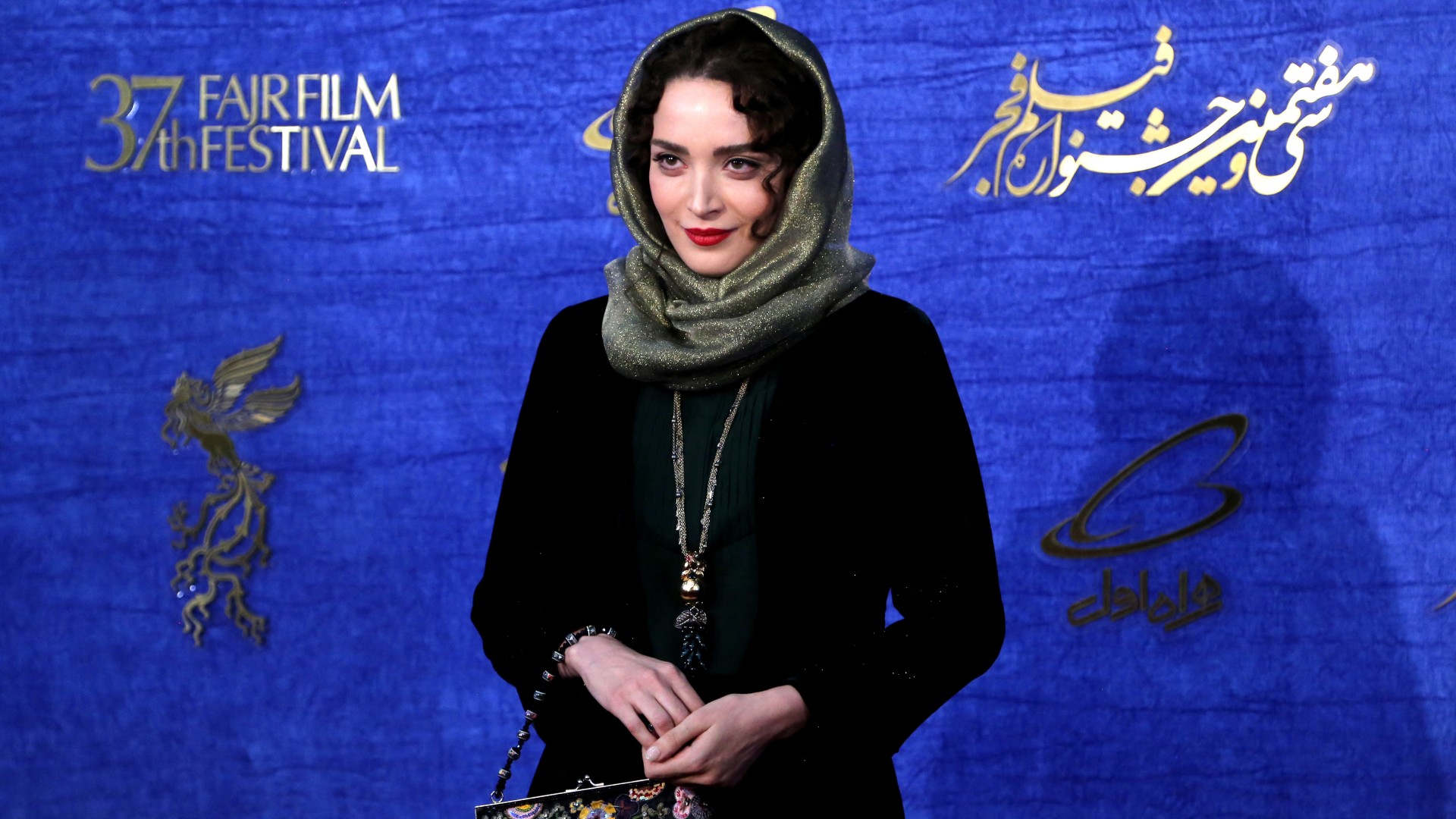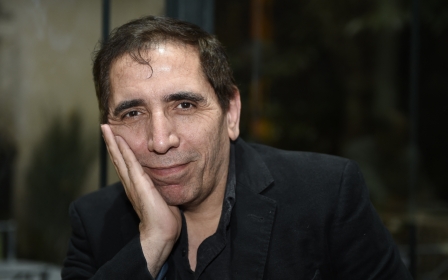Women, life, freedom: How Iran protests were foretold in film

No social uprising of the magnitude we have been witnessing in Iran since mid-September, led by women of all social classes and economic backgrounds from across the country, is entirely outside its historical and cultural contexts - nor should such movements be reduced to what we already know about these societies.
We thus have a dual balancing task of both marking the historical and cultural roots of this uprising, while allowing it to teach us something very specific about its own nature and disposition.
The word 'women' in this uprising’s slogan refers to the embattled, impoverished and battered working classes in the darkest corners of this brutalised country
Since the commencement of the “women, life, freedom” movement, some Iranian social scientists have opted to call it the “Jina uprising”, in honour of Mahsa (Jina) Amini, the young Kurdish Iranian woman who died in the custody of the state’s morality police. Historians have sought to give their readers an “origin” for the movement, going all the way back to the Constitutional Revolution of the early 1900s and other momentous occasions.
Such garden-variety, cliched historicism gives the false assurance that we have learned something about this uprising if we just keep stretching the events that came before it, while failing to try to understand its particularities. To be sure, these particularities should not be fetishised by issues of gender, class, ethnicity, or the useless bugbear of “secularism”. But assimilating this uprising backwards to what we already know about Iranian society is also a logical and analytical fallacy.
The world changes; societies grow into and out of their histories; the tyranny of the past is the first to be dismantled in such youthful movements. Iran in the autumn of 2022, like Egypt in the winter of 2011, is on the edge of a new era. Uprisings may or may not have any tangible political results, but the societies that give birth to them are never the same as they were before.
New MEE newsletter: Jerusalem Dispatch
Sign up to get the latest insights and analysis on Israel-Palestine, alongside Turkey Unpacked and other MEE newsletters
Multiple meanings
In this regard, the sustained course of Iranian film, fiction, drama, music and poetry has had a crucial role to play - for by their nature, such cultural artifacts have multiple meanings. They do occasion a certain understanding of their society, but at the same time, given the allegorical disposition of their visual and performing artistry, they also point to something else.
It is not accidental that as I write, Jafar Panahi, a leading Iranian filmmaker, and some of his colleagues have been summarily arrested and jailed by the ruling Islamist tyranny - afraid not of what they may say, but of what their cinema has entailed.
A good example of such cultural artifacts is thus the case of Iranian cinema of the last half-century. At the outset, we must understand that the very architecture of visual and performing arts in Iran, as elsewhere, has been radically altered and digitised. This generation reads more Facebook than books, and watches more videos on Instagram and YouTube than movies in theatres.
The digital age has radically shortened their attention spans, as the logic of Twitter has radically shortened their patience for complicated sentences with more than one subordinate clause. But still, in the very subconscious shores of their thoughts, images and passages of their long and winding past shimmer with power and tenacity.
The next issue of note is the youthful character of this current uprising, which corresponds to the youthful character of Iranian cinema and the centrality of children and young adults in the legacies of leading filmmakers such as Panahi, Abbas Kiarostami, Amir Naderi, and many others. The children of this cinematic legacy are prematurely political, made so not just by a parental generation that harboured revolutionary romances, but also by children’s authors, filmmakers, poets, and artists who invested so much into their artwork for the future generation. This is that future generation.
Take, for example, Naderi’s Harmonica (1974), where we encounter a boy who chances upon a harmonica, with which he tyrannises his friends, demanding and exacting obedience from them in exchange for allowing them to play his magical instrument. The boy sports a haircut with an uncanny resemblance to a crown or turban. Since its release nearly four decades ago, Harmonica has traversed back and forth into the deepest thickets of Iranian history, referencing not just the bonanza of oil revenues with which the late Shah tyrannised his people in 1973, but any other crowned or turbaned tyrant in the nation’s distant or recent history.
Iconic vigilance
The more important issue of the current uprising, of course, is the material and iconic vigilance of women in all walks of life. This points to the exceptional power and presence of Iranian women as producers, directors, actors, editors, sound designers, and above all, subjects of Iranian cinema. Do not be fooled by the white-passing young women highlighted by the US-EU media glitz; the word “women” in this uprising’s slogan refers to the embattled, impoverished and battered working classes in the darkest corners of this brutalised country, who never appear on the cover of any magazine.
What about those real women? The cinema of Bahram Beyzai has paid exceptional attention to Iranian women, while in the opposite direction, Masoud Kimiai has dwelled on patriarchal archetypes. In the middle of the two iconic filmmakers stands the remarkable oeuvre of Dariush Mehrjui and his famous trilogy - Sara (1993), Pari (1995) and Leila (1997) - which offers a detailed encounter with the trials and tribulations of middle-class women.
Some leading female filmmakers, such as Rakhshan Banietemad, Pouran Derakhshandeh, Tahmineh Milani, Marziyeh Boroumand, and scores of others have brought the specific issues of women into even sharper focus. Marzieh Meshkini’s The Day I Became a Woman (2000) is a singularly iconic film to watch at this moment; in three successive episodes, she portrays the debilitating fate of women in a repressive Islamist regime.
All these films and scores of others like them have been extremely prescient about what is happening today - but the drama, the stories, the heroic deeds, the tragic ends and the symbolic echoes of this uprising remain to be fully canvassed and understood. All the young women and men viciously killed by the Islamic Republic’s security forces have gut-wrenching stories yet to be told.
The particular combination of “women, life, freedom” is crucial here. The whole project of intersectionality is fully evident in this slogan - for while sustaining the centrality of the doubly tyrannised reality of Iranian women, it adds to this the economic factor of living in dignity, and the political project of freedom.
Crucial task
The devil is in the details. Consider the case of the Kurdish-Iranian filmmaker Bahman Ghobadi and his undisputed masterpiece A Time for Drunken Horses (2000), a jewel of a film that he could never match in his illustrious but winding career. The Kurdish origins of the slogan “women, life, freedom” become evident in the film when a family sells a young girl as a child bride in exchange for a mule, as her older brother aims to take his handicapped younger brother to Iraq’s Kurdish region for a lifesaving operation.
In three consecutive films directed by Panahi - The Circle (2000), Crimson Gold (2003) and Offside (2006) - issues concerning poverty-driven sex workers, impoverished war veterans, and women being barred from attending sporting events are collected into a detailed account of what deeply ails Iranian society. After watching these films, one can no longer wonder from where the political and economic depth of this hatred towards the ruling regime emanates. These are Iranian films - not Israeli, Saudi or American films, or films by bought-and-paid-for “regime changers” from abroad.
What Iranian women are doing is no different from what their sisters, mothers and grandmothers have done across the Arab and Muslim world
This entire cinematic legacy is crucial in helping us to locate the current uprising in the right provenance. But still, the movement itself, like other similar uprisings around the region and indeed the world, have things to teach us beyond their history.
There is nothing unusual or specific about women being integral to a social uprising. Women have had a powerful presence across Arab and Muslim revolutions. Yemeni activist and Nobel laureate Tawakkol Karman became emblematic of the rich and powerful presence of all Arab women in the destiny of their homelands. The vital role of Egyptian women in their revolution and its tyrannical aftermath revived memories of earlier generations of revolutionaries; the current Iranian uprising harkens back to the iconic moment when Huda Sharawi decided to defy public norms and unveil herself.
What Iranian women are doing is no different from what their sisters, mothers and grandmothers have done across the Arab and Muslim world, and in fact around the globe, but especially in countries such as Egypt, Syria, Iraq, Tunisia, Morocco and Palestine. Each of these uprisings has had its own specific character, which takes serious scholarship and critical thinking to decipher.
In that crucial task, just begun, particular attention must be paid to how we recollect and reread the iconic artifacts of the past for the unfolding drama of the present.
The views expressed in this article belong to the author and do not necessarily reflect the editorial policy of Middle East Eye.
Middle East Eye delivers independent and unrivalled coverage and analysis of the Middle East, North Africa and beyond. To learn more about republishing this content and the associated fees, please fill out this form. More about MEE can be found here.







